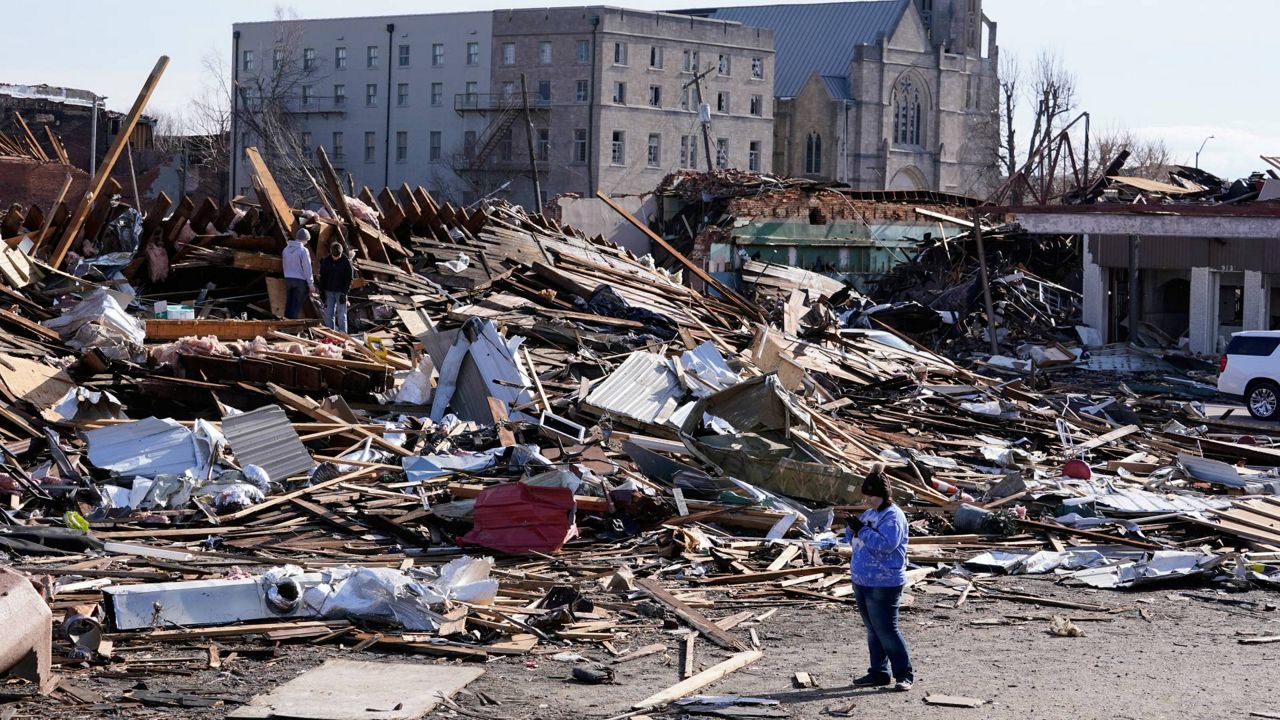LOUISVILLE, Ky. — The massive clean up in Western Kentucky communities hit by this month’s tornadoes is well underway and the affected communities are beginning to find homes for the millions of cubic yards of debris left behind.
Among the more novel solutions is Princeton, Kentucky’s. The town of 6,000 is turning part of a local golf course into a landfill, according to Mayor Kota Young.
“With such a wide swath of devastation across the region, obviously landfills and locations where this debris can be safely disposed are in short supply,” Young said on WPKY this week. “This is going to significantly speed up our recovery process and be much cheaper as well.”
Construction on the new landfill began last Sunday and was completed Wednesday. "I’m not much of a golfer, but I think that’s what you call a hazard," Young wrote in a Facebook that included drone footage of the new landfill. "The City’s emergency landfill is now operational and ready to begin receiving CDD/home debris."
In Bowling Green, most debris is being taken to the long-closed Glen Lily landfill. Opened in 1973, the landfill closed in 1981 and was recently discussed as the potential site for a motor sports park.
“It’s about a 20-some acre area that will hold all of the debris,” City Public Works Director Greg Meredith said at a meeting of the Bowling Green Board of Commissioners Tuesday. “We’re starting with vegetation now to try to get some of that out of the way so that we can move on to actual construction debris, things from the houses, etc.”
Some local governments are allowing debris to be burned while others have explicitly prohibited it. According to Young, the state has approved several burn sites in Princeton. Residents are being asked to gather vegetation and clean lumber to be burned at those sites. Officials in Muhlenberg County have also set up a burn site, while Lyon County Executive Wade White has told residents that they can safely burn vegetation on their own land.
But in Graves County, burning debris is prohibited by local ordinance. "There is concern about the possibility of asbestos and other hazardous materials intermingled with limbs and other debris,” according to the Graves County Office of Emergency Management.
Graves County, which is home to Mayfield, will be getting help from the U.S. Army Corps of Engineers (USACE) starting Dec. 26. In a news release Tuesday, the USACE said it was assigned a mission from the Federal Emergency Management Agency (FEMA) to assist with debris removal in Graves County because the job “exceeds local and state capabilities.”
The team will work to remove approximately two million cubic yards of debris with an expected cost of $120 million. It has not yet been determined where the debris will go.
“The KY Department of Environmental Management has provided a list of all available landfills for our team to consider,” USACE spokesperson Katelyn C. Newton said. “Our goal is to manage the debris is a safe manner using the most efficient and cost-effective method possible. We will likely dispose of this debris using multiple means, methods and locations over time.”
For the next two weeks, the federal government will cover 100% of the cost of debris removal. President Joe Biden made that pledge when he visited Western Kentucky last week. Gov. Andy Beshear has said he’ll ask Washington to extend its time table next month.
As many leaders have noted, debris removal is one of the most complicated and costly parts of the post-storm recovery. Michael Dossett, the director of the Kentucky Division of Emergency Management, called it a “herculean task” last week. And it won't be over quickly. Some officials have suggested that it will take years for Western Kentucky communities to dig themselves out of the mess created by the tornadoes. Some areas may never recover from it all.



